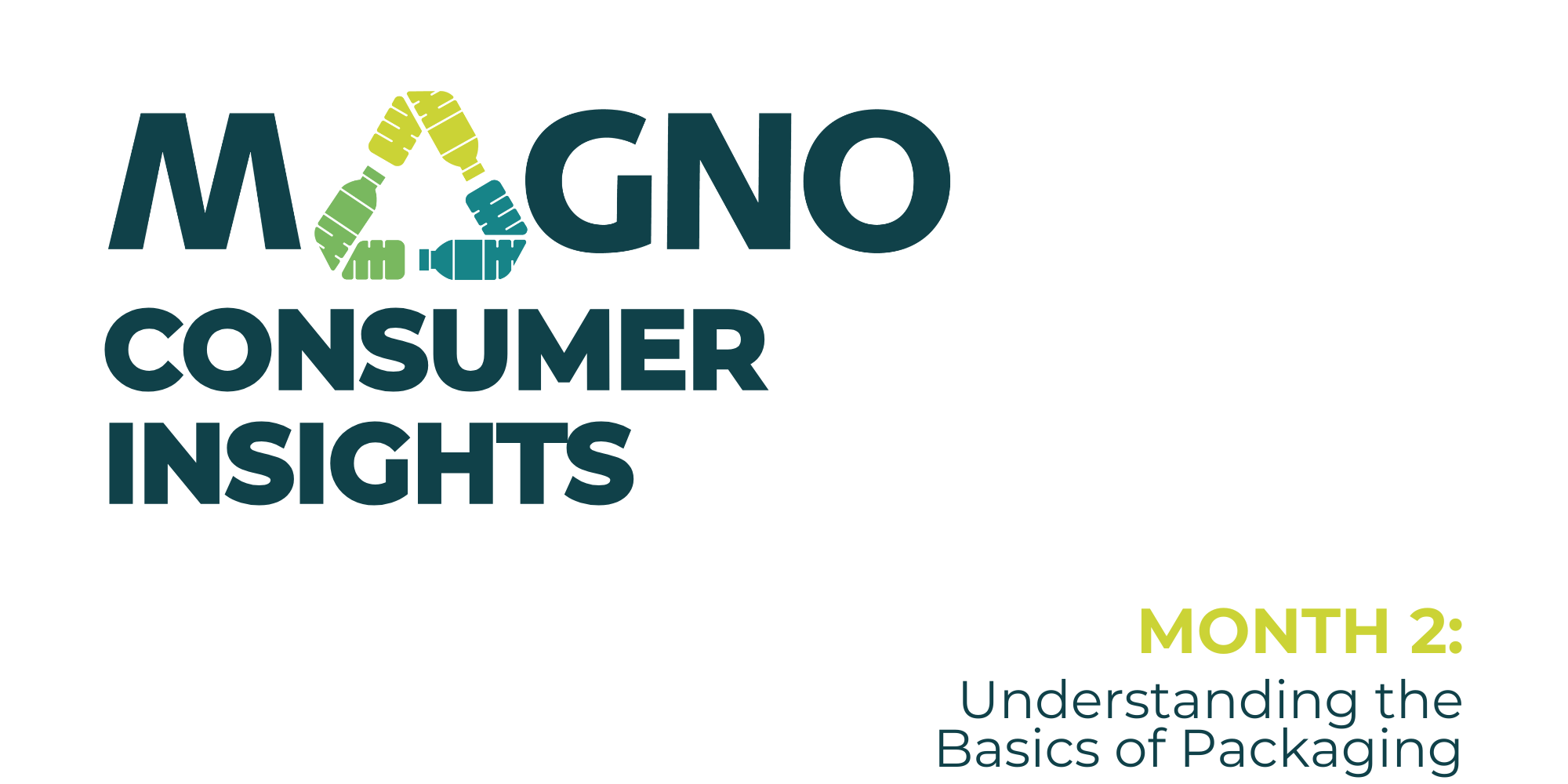MAGNO Consumer Insights – Month 2
In the second month of our Consumer Awareness Campaign, we continue our exploration of food packaging and its environmental impact. This time, we focus on understanding the basics of packaging, helping consumers recognize the different materials used, their recyclability, and how to make informed purchasing decisions.
Food packaging plays a crucial role in product preservation, transportation, and convenience. However, it is also one of the main contributors to waste pollution. Through this month’s articles, we aim to break down the complexities of packaging types, recycling symbols, and sustainable alternatives to empower consumers to take action.
Understanding the Basics of Packaging
- Types of Food Packaging: Advantages and Environmental Impact
Food packaging comes in many forms, from plastic to glass, metal, and biodegradable materials. While packaging is essential for food safety and distribution, not all materials are created equal when it comes to sustainability. This article explores the pros and cons of different packaging types, highlighting their environmental impact and encouraging consumers to choose more eco-friendly alternatives.
- Common Types of Plastics in Food Packaging and Their Recycling Labels
Plastics dominate the food packaging industry, but not all plastics are recyclable. Recognizing plastic types and their recycling labels is key to responsible disposal and waste reduction. This article provides a guide to the most commonly used plastics, explaining their recyclability and how consumers can opt for materials with a lower environmental footprint.
MAGNO CONSUMER INSIGHTS: Common Types of Plastics Used in Food Packaging and Their Recycling Labels
- A Simple Guide to Understanding Packaging Labels and Recycling Symbols
Ever wondered which bin to throw your packaging into? Recycling symbols are designed to make waste sorting easier, but their complexity often leads to confusion. This article simplifies the meaning of recycling symbols and explores the challenges of inconsistent labeling systems across different countries, advocating for clearer and more standardized packaging information.
- How to Identify Biodegradable or Compostable Packaging
With the rise of eco-friendly packaging, terms like “biodegradable” and “compostable” are becoming more common—but what do they really mean? This article clarifies the differences between these labels, how to verify a product’s environmental claims, and why transparency in packaging information is essential for truly sustainable choices.
MAGNO CONSUMER INSIGHTS: How to Identify Biodegradable or Compostable Packaging
With this collection of articles, we conclude the second phase of our campaign, aiming to provide consumers with essential knowledge on packaging materials and their environmental implications. Stay tuned as we continue to explore sustainability topics, and don’t forget to share these insights to help spread awareness!






